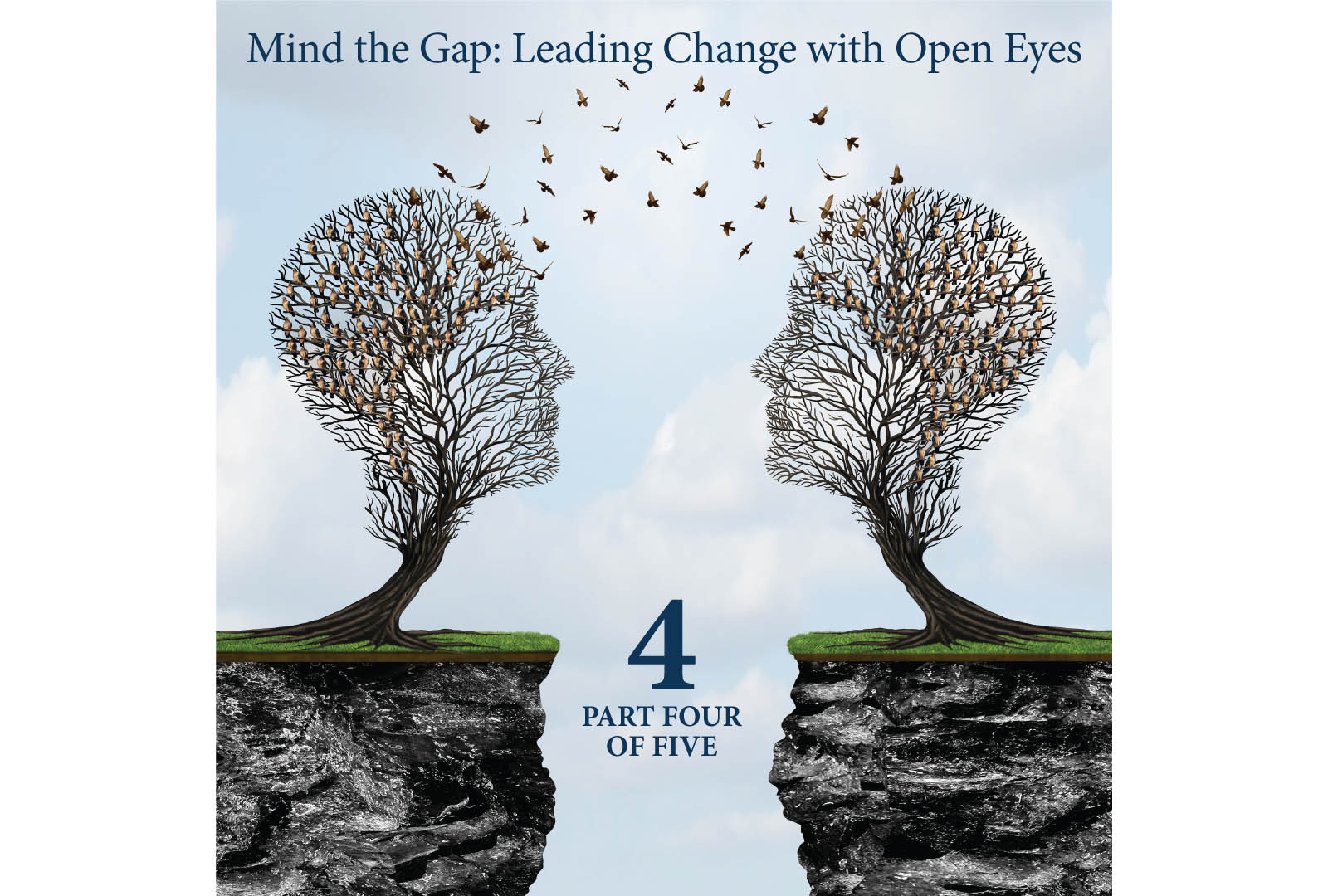MIND THE GAP: LEADING CHANGE WITH OPEN EYES Part Four: How Unintentional Scapegoating Hinders Change
Most of us can probably think of a time when we were blamed for something that was not our fault. Being intentionally made a scapegoat is unfair and it can cause real damage. Unintentional scapegoating is something I see frequently in organizations, and it is no less damaging. It’s a practice that can widen the perception-reality gap between senior executives and middle managers during organizational change and has a negative impact on both people and business success.
Early in my career as director of a new operations group at an investment firm, I created my first unintentional scapegoat. “Carl” was an experienced systems developer who joined our team six months after recent reorganization. I noticed he rarely spoke up in team meetings and offered minimal responses when asked directly for his point of view. Consulting with my inner circle [see my last blog for more on this pitfall] to “test” my observations, we unanimously concluded Carl had trouble reporting to a young woman who lacked his technical expertise, as well as working with a young, all female team. Assumptions “confirmed”, I prepared to hold a difficult conversation with him. Here’s how it went:
Me: How are you feeling about our team?
Carl: Good overall but, to be honest, it really caught me off guard how everyone here shares ideas and asks for input. At my last company, we were never asked our opinion on issues outside our direct domain area. It’s not that I don’t want to participate; in fact it’s great learning. It would help me, if you’re okay with this, to get a head start prior to a meeting so I can come prepared to share my ideas on a topic.
Me: (cringing with shame) Of course. Let’s talk about how to make that happen.
I’m happy to say Carl became one of the top performers and a cherished member of our team. When I look back on this memory, I thank my lucky stars that I didn’t deliver such completely biased feedback to someone so authentic and ready to learn.
It’s Not Them, It’s Us
My Carl story is a classic case of attribution error. As it applies to organizational change, attribution error blames personal attributes for systemic issues. Some examples of how this sounds: “We keep seeing new leadership team members struggle to adapt to our fluid culture. It’s hard to find the right fit.” “It’s clear (insert name) is the real problem in creating a difficult dynamic for the team’s success.” What’s worse is that research on attribution error in organizations says we tend to ascribe failures to people’s personal attributes (internal motivations, personality, psychology) and successes to external situational factors. When this cognitive bias is unchecked, senior leaders miss out on a richer view of the situation at hand and valuable information on how to improve the change itself. In my case, Carl’s vulnerability helped me reassess my personal assumptions on gender and age. I also addressed systemic issues to create better onboarding support for new hires. And I learned the value of testing bias with more objective and diverse sounding boards.
In my work with organizations, unintentional scapegoating shows up frequently as requests for executive coaching of specific team members “not performing at their best”. But a closer look often uncovers key environmental and situational factors which may be influencing the individual’s performance. For example, market conditions necessitating a more aggressive sales approach requiring faster decision making. By expanding our view from an individual who is seen as the “issue”, we can move from problem solving a symptom – one person’s behavior – to a root cause solution. Further, we avoid the common pattern of removing an individual on the team and seeing the issue persistent in another form; needlessly losing talent, progress on goals, and credibility in the organization.
Three Steps to Minimize Scapegoating
As I collaborate with leaders navigating organizational change, I have observed that those who are best at managing attribution error and minimizing unintentional scapegoating apply three powerful practices:
- Apply a wide lens view when observing unproductive behaviors. This means broadening focus beyond an individual’s actions and exploring surrounding environmental and systemic influences. You can develop this mindset with curiosity and a desire to learn and solve the root issue.
- Test hypotheses to actively learn verses seeking to confirm existing assumptions.
- Engage the right sounding boards, actively seeking out opinions from people who look and think differently from you. This is similar to the practice of creating an inclusive circle noted in my prior blog.
The reflection below is designed to help you apply these three practices to your real-world change work. And in the next blog, the final in this series, I’ll share ways to create open feedback loops that will deliver the diverse and valuable insights you need for change success.
Leadership Reflection:
Apply the three practices above as you consider a current situation in which someone is exhibiting what you would describe as unproductive behaviors.
- Wide lens view: What else is happening around this individual which may be contributing to this behavior?
- Test hypotheses: What hypotheses are you making about this individual and their role in this situation? Come up with three alternative hypotheses which may also be plausible. What data will help you test these hypotheses?
- Engage diverse support: Whose perspectives in the organization will provide a more expanded and objective view?

